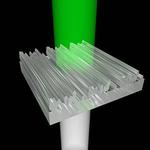Other

“Pumping liquids may seem like a solved problem but optimizing the process is still an area of active research. Any pumping application — from industrial scales to heating systems at home — would benefit from a reduction in energy demands. Researchers at …

“The number of qubits in superconducting quantum computers has risen rapidly during the last years, but further growth is limited by the need for ultra-cold operating temperatures. Connecting several smaller processors could create larger, more computationally powerful quantum computers, however …

“New topological superconductivity in multilayered graphene sheets Graphene is a strange material. Understanding its properties is both a fundamental question of science and a promising avenue for new technologies. A team of researchers from the Institute of Science and Technology …

“Physicists publish a theoretical framework to explain the recent discovery of superconductivity in trilayer graphene Since superconductivity in three-layered graphene was discovered in September, the physics community has been left puzzled. Now, three months later, physicists from IST Austria together …

“Scientists advance the understanding of potential topological quantum bits Scientists from the Nanoelectronics group at the Institute of Science and Technology (IST) Austria were looking for half an electron as a basis for a quantum computer. Together with researchers from …

“A radar device that relies on entangled photons works at such low power that it can hide behind background noise, making it useful for biomedical and security applications. One of the advantages of the quantum revolution is the ability to …

“Scientists develop prototype of what may serve as link to connect quantum computers Entanglement is one of the main principles of quantum mechanics. Physicists from Professor Johannes Fink’s research group at the Institute of Science and Technology Austria (IST …

“nterdisciplinary team of scientists develops a new numerical technique to describe molecules in solvents Feynman diagrams are a powerful tool in condensed matter physics. By turning highly complex equations into sets of simple diagrams, the method has established itself as …

“New design tool automatically creates nanostructure 3D-print templates for user-given colors | Scientists present work at prestigious SIGGRAPH conference Most of the objects we see are colored by pigments, but using pigments has disadvantages: such colors can fade, industrial pigments are …

“Scientists at IST Austria and in Paris develop framework connecting and extending previous theories on how neurons in our sensory systems select and transmit information | New theory gives concrete predictions for previously unstudied coding regimes Digital video cameras have the …

“Researchers at IST Austria have built compact photon directional devices. Their micrometer-scale, nonmagnetic devices route microwave photons and can shield qubits from harmful noise. Qubits, or quantum bits, are the key building blocks that lie at the heart of every …

“3D printers have been around since the 1980s, but we are still far from maximizing their potential. One active area of research and development is “self-actuating” objects: flat materials that transform themselves through material forces into the desired 3D object …

